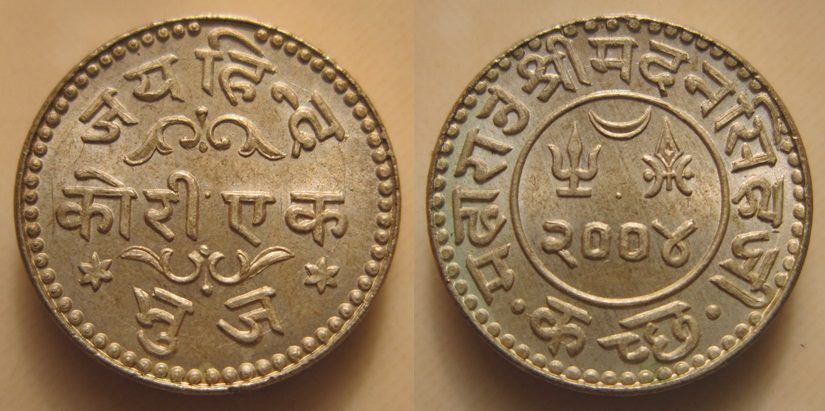Kutch- Jai Hind Kori
2017-08-16 Wed
Did you know that the coins issued by the Princely State of Kutch had “Jai Hind” inscribed on them?Maharaja Madan Singhji issued coinage with the unique inscription, ”Jai Hind Kori” and “Jai Hind Mohur” which were minted during India’s independence.! Further as per the World Gold Coin catalogue, only 30 pieces of Gold Mohurs were issued making them one of the rarest coins of India.
The Indian Princely State (IPS) of Kutch was located in the west of the Indian peninsula. The history of Kutch goes back to Dholavira, a famous Indus Valley Civilization site for trade and maritime activities. The Sanskrit word Kutch (earlier Cutch and now Kachchh) means a Tortoise. This peculiar shaped state on the western coast of India literally looks like a tortoise entering the sea and was the only Princely State of India to have a coastline!
The Jadeja Rajput dynasty that belonged to the Samma tribe ruled the state of Kutch from the time it was created in 1147 up to 1947 when it became part of the new India. During Akbar’s reign, Kutch fell under the rule of the Gujarat Sultans but a Kutch ruler, Rao Bharmal I (1586-1632), visited Jahangir and established a relationship which was sufficiently warm as to leave Kutch virtually independent throughout the Mughal period.
Later the state became a part of the Cutch agency and was then shifted to the Western India States Agency as a part of the Bombay Presidency
Coin description:
Ruler: Madanasinghji reigned (VS 2004-2005 i.e. 1947-1948 AD)
Denomination: 1 Kori
Year: VS 2004 i.e. 1947 AD
Metal: Silver
Mint: Bhuj
Obverse: Legends: “Jai Hind”, “Kori Ek”, “Bhuj” set within dotted border and a simple decoration of stars and leaves.
Reverse: VS year in the center with a Trident and Dagger with crescent above (Coat of Arms of Kutch IPS). Legends: “M(a)-ha-ra-j(a) Sri M(a)-d(a)-n(a)-sin-h-ji” and “Kutch” set within a dotted border.
Latest News
-
Ghiyath Shah as Sultan
2025-10-17 FriAfter ascending the throne of the Malwa Sultanate, Ghiyath Shah issued circular coins early in his r...
-
Malwa Sultan Ghiyath Shah Square Gold Tanka
2025-10-16 ThuMalwa Sultan Ghiyath Shah issued square gold tankas in three weight standards: Double Tanka (21.9g),...
-
Malwa Sultan Ghiyath Shah's Billon Tanka as Heir Apparent
2025-10-14 TueIn Billon, Ghiyath Shah issued coins under two weight standards. Billon Tanka of 96 rati (10.7-11g),...
-
Antiochos I Soter Silver Tetradrachm, weighing 16.87 grams, sold for INR 22,000.
2025-10-07 TueAntiochos I, the Greek king of the Seleucid Empire, was of mixed heritage, being half-Iranian and ha...
-
Ghiyath Shah as Heir Apparent
2025-09-25 ThuGhiyath Shah was the ruler of the Malwa Sultanate, reigning from 1456 to 1500. From 1456 to 1469, he...

